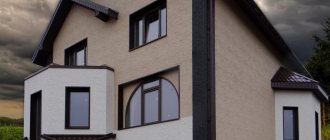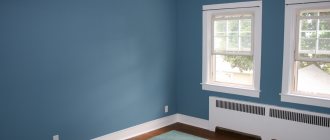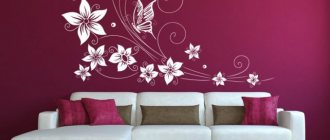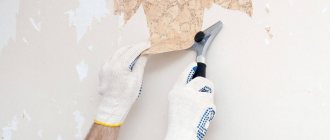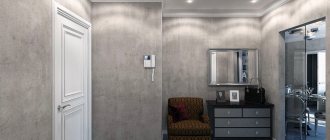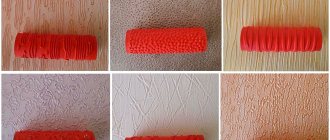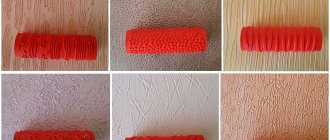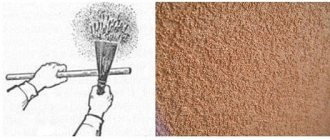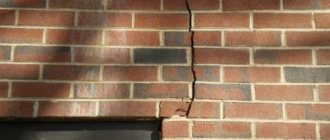The word "plaster" comes from the Italian "stuccatura" (plastering). Previously, gypsum and alabaster were used as the basis for the mixture. There are many more substances being used now. The material is applied to the working surface itself. In this case, it is not necessary to erect lattice and frame structures. This construction work is carried out both on a bare wall and with the use of an additional layer of thermal insulation.
Adding a decorative layer allows you to create expressive patterns on the walls. Such work, as it may seem, requires great skill from a specialist in this field. This is not entirely true. You can achieve the desired layer with your own hands. Yes, it is more reliable to trust such work to craftsmen, but the main role in plastering is played not so much by the skill of a specialist, but by the material itself. It consists of special substances: fillers. These substances help create an unusual pattern on the wall. What are the types of decorative plasters and facade finishing options? How to choose the right option? Answers to such questions will allow you to efficiently plaster the facades of houses.
Requirements for facade plaster
Plaster for external finishing should be:
- resistant to moisture;
- not responsive to temperature changes;
- have sufficient strength;
- do not allow heat and sounds to pass through;
- have decorative qualities.
If you live near industrial facilities, take care to choose plaster that can protect your home from adverse external influences. Now on the market there are all the necessary finishing materials for this.
VARIETIES OF DESIGN AND TEXTURES
To make the facade attractive, several methods of texture application are used. There are traditional and modern methods.
Modern textures include the following subtypes:
"Pebble". This textured mixture consists of many tiny granules. Allows you to create both shallow bas-reliefs and, for example, “sgraffito”, as well as many other types of finishes. Thus, this texture seems to be a universal among other subspecies. Method of application: mashing the mixture with a plastic grater.
Decorative plaster "Bark beetle". The most popular texture of building materials. Allows you to create any patterns (vertical, horizontal, wave and others). The method for treating a house with bark beetle is the same as for the previous texture.
"Mosaic". Using this texture you can also create interesting patterns in the shape of mountain minerals. Adding dyes to the product allows you to create a variety of colors. Can be applied to brick, concrete, stone and drywall. The application method is similar to the previous textures.
“Fur coat” is applied in an even layer. The pattern resembles the reverse side of a sheepskin coat. The necessary roughness is obtained by spraying on the walls. It is necessary to protect the finishing coating from sunlight . Otherwise, due to rapid drying, the material will crack. Usually three layers are created.
Plaster with heat and sound insulation
Any type of plaster mixture has some degree of thermal insulation. This is especially true when the house has thin walls.
But there is a special type of plaster that is designed to retain heat in the house. It is called “warm” and contains fillers in the form of foam glass, sawdust, perlite or vermiculite. This is what gives it its thermal insulation properties. A few cm of such plaster can replace ten cm of brick.
Not every type of plaster can cope with sound insulation. It should contain porous components such as pumice, slag or magnesite, which are capable of muffling sounds. But these are only some of the auxiliary elements in soundproofing a house.
RECOMMENDATIONS FOR SELECTION
- The mosaic layer is combined with stone finishing, but you need to choose the right color of the mixture. It is important to remember to combine with the actual color of the stone. This type consists of tiny marble chips, so consider adding sparkles to it. This plaster is used in decorating individual building elements. Using a mosaic mixture, large patterns are created on tall buildings.
- The Venetian texture gives the facade a classic look. This is due to the external similarity of the material to marble. This type harmonizes well with wooden frames, stucco molding, and columns. There are two basic types of this solution - embossed and smooth. Despite all the advantages, the invoice has a high price.
- To give the building a bright color, it is better to use acrylic plaster. The surface is treated with textured rollers, brushes, and spatulas. The acrylic composition is in harmony with both modern finishes and the most common solid wood.
- The mineral type is very versatile. This material creates a field for experimentation with shade and structure. This mixture does not require complex finishing or careful selection of frame colors. These qualities make the mineral mixture an extremely practical and popular material.
A unique texture can be achieved by adding particles that are not part of the dry composition.
When choosing a high-quality solution for finishing the facade of a private house, carry out some manipulations:
- Check tensile strength. The indicator of this criterion should be less than that of the working surface;
- Consider your appearance preferences. Decorative plastering of walls is a responsible job, so weigh all the advantages and disadvantages of the compositions;
- Pay attention to the nuances in the field of application. Not all types of plasters are universal;
- Find out the degree of vapor permeability. The better it is, the more the walls will “breathe”.
- Do not forget to take into account the consumption rate of the mixture in relation to the quantity produced. This will eliminate errors in calculations before plastering;
- Choose plaster specifically for external cladding. Facade plaster for exterior work requires one important indicator - the value of adhesion. It is necessary to choose the mixture with the highest value, because it is this that indicates the degree of adhesion to the working surface.
Wet plaster method
A well-known method of plastering walls. First, a primer is laid on the wall, then insulation and reinforced mesh. After this, the plastering process itself begins. This technology is good because it eliminates condensation, creating a warm and dry living space.
As insulation, you can choose polystyrene foam, OSB boards or mineral wool. These materials are resistant to moisture and have good thermal insulation.
Since many amateurs want to start decorating walls with plaster on their own, it is worth cautioning against errors in its dilution. The best way for non-professionals is to buy a ready-made mixture. It is convenient to store and transport.
There are types of plasters that can only be applied by professionals. If you want to create a complex pattern, it is better to contact experienced builders and look at photos of facade plaster on the Internet. For many, facade plaster has become a durable, inexpensive, and stylish way to cladding a house.
MATERIAL CONSUMPTION
Decorative plaster on the facade of a house requires mixing a dry solution with water. In this regard, the following simple calculations can be determined:
Find the recommended dosage of dry matter and amount of water on the package. Let's say that for 1 sq. meter of working surface, when applying the mixture in a layer of 10 mm, you will need 8 kilograms of dry base. It turns out that to finish the facade of a private house with a 2 cm layer of plaster, you need: 8 kg * 2 cm = 16 kg (per 1 square meter). If you are trying to understand how many kilograms of the mixture will be required to process the entire facade, you need to multiply its area by the found dry matter consumption. Thus, for a building with an area of 15 sq. meters, the calculation will be as follows: 16 kg * 15 = 240 kg. All that remains is to find out how many packages you need to buy to plaster the entire surface. This is done as follows: 240 kg / 40 kg = 6 pieces, where 40 kg is the dry weight of one package (this may vary, so use this calculation as an example only).
Important. If, when calculating the number of packages, you get a non-integer number, then you need to round up to a larger value.
Averages:
- Mineral products – 2 – 4 kg per square meter;
- Acrylic products – 1 – 3 kg per square meter;
- Silicone products – 2 – 4 kg per square meter.
As you can see, there is nothing complicated in the calculations, you just need to take into account all the indicators.
Advantages of facade plastering
The decorative material is durable, resistant to mechanical damage, and soundproof. The reasonable price of facade plaster makes it a popular finishing mixture. It forms a durable layer that increases the service life of the structure.
Manufacturers offer a wide range of colors, so you can choose an option that will harmonize with the design of your home. This material can withstand winter cold and heat.
HOW TO APPLY DECORATIVE PLASTER
Decorative plaster for the facade of the house, applied to the facade in three layers. Do the finishing not squarely. meters, but a whole wall. Thus, the finishing of the facade will be smoother and more uniform. In no case is it allowed to plaster the wall in parts, and even on different days. This is not permissible, because the joint between these parts will stand out noticeably.
Plaster is also applied to the reinforcing mesh. At this step, many people make a mistake - they first lay the mesh, and only then coat it with adhesive. The correct thing to do is just the opposite.
Wood needs to be plastered in a special way. First, you should protect the wood from moisture, because this material absorbs water very quickly. It is for this reason that the mixture may crack.
The solution must be mixed before finishing begins. The thickness of the layer is approximately the same as the diameter of the aggregate. The tool should be held at an angle of 50-70 degrees and not press hard on it. When working with bark beetle, take into account the thickness of the layer - if the texture sticks to the grater, then the amount of solution needs to be reduced. Before painting, apply decorative varnish to the surface, but first open it with a primer.
The brick finishing technology looks like this:
- Preparation of the mixture according to the requirements written on the packaging;
- Wall primer;
- Fastening beacons to the wall frame;
- Wetting the work surface. This will increase the drying time of the mixture.
- Mixing the material;
- Applying plaster (it is better to do it with splashes);
- Leveling with a spatula (from bottom to top);
- Creating grooves. They will serve for fixation with the subsequent layer;
- Final finishing after the initial layer has dried;
- Smoothing the layer;
Application to concrete
The concrete surface is very heterogeneous. For these works, it is necessary to carry out preliminary thorough priming of the walls (for example, you can use the “Concrete-Contact” products from “Lakra”).
Reinforce the walls, soften the walls with water.
Application to insulation
The insulation must first be installed with glue, and then additionally, after a day, fixed with dowels. After fastening, they begin to reinforce the surface.
A reinforcing mesh (about 2 mm thick) is lowered into the composition and then bonded to the surface. Drying takes about three days. Work must be carried out in such a way as to avoid rain.
Read more about the technology of plastering facades in this article.
Advantages and disadvantages
Plaster protects the inside of the building from adverse natural factors and decorates the walls - this is its main purpose and at the same time a plus. Putty provides savings compared to tiles, panels and other options for wall coverings. In addition, the application scheme is simple in terms of performing individual steps. There is no need to repeat the cycle several times, starting all over again. Thanks to this feature, efforts can be directed towards creation: the formation of patterns and relief. At one time, application methods were developed, and now they continue to develop. Despite the benefits of wall insulation, plaster has some minor disadvantages. Dismantling will cost considerable effort and time. The surface for some types of mixtures will need to be pre-cleaned of dirt, but for large areas this is difficult.
FINISHING TOOLS
The walls are treated with textured rollers. Their main difference is the design equipped with rollers with a relief surface. These tools can consist of wood, rubber, plastic, leather and lint. There are textured and structural rollers.
Another tool is a trowel. Using this tool you can apply and level the layer.
The spatula is the third basic device for finishing the facade. For the Venetian texture, a converted tool can be used - a Venetian spatula.
When applying some textures, you may need an additional tool. For example, for the “bark beetle” you need a special grater.
Application area of plaster
As you know, various building materials are used to build a country house: stone and brick, wood and concrete, aerated concrete and foam blocks. As for plaster for finishing the facade of a house, its type depends on the base of the wall, since the materials must be combined with each other, which will form a durable and attractive coating. If you believe the recommendations of manufacturers and specialists, we can draw the following conclusions:
- For exterior finishing of a wooden surface, you need to use cement-sand or acrylic plaster. In some cases, it is permissible to use silicate and silicone mixtures (there are special varieties recommended by manufacturers). As for gypsum compositions, their use is unacceptable.
- For concrete and brick, gas blocks and foam blocks, you can use any type of plasters; the choice of finishing material depends on its cost and decorative properties, price and reputation of the manufacturer.
- To cover mineral substrates you can and should use silicate plaster.
- You can also coat metal with plaster, but first you need to prepare it (degrease and thoroughly clean it), after which a primer and plaster mesh are applied.
- To finish ventilated facades, you can use acrylic, silicate or silicone plaster, but it is important to carry out preliminary work to ensure good adhesion (the use of a primer and construction mesh will be required).
BRANDS
Remember that you need to choose a brand based on your personal goals and calculations. High-quality materials are produced by both domestic and foreign manufacturers.
Popular brands:
- Ceresit;
- Perfecta;
- Isomat;
- Krafor;
- TIKKURILA;
- Caparol Streichputz;
- Textur Farbe;
- V.G.T.
Leveling plaster along beacons
The use of beacons can significantly reduce plastering time. With their help you can make the wall as smooth as possible.
But it should be remembered that too large unevenness should be eliminated, and if there are significant differences, then the plaster must be applied in several passes.
Beacons begin to be installed from the corners. The thread is pulled from them, and then, guided by the marks, several more beacons should be secured to the main surface. It is necessary to secure the screws, the heads of which should protrude from the wall as much as there is a difference in height. After fixing the hardware, it is necessary to secure the profile.
To plaster the entire surface perfectly, you need to apply the mixture in stages, not on the entire wall, but from lighthouse to lighthouse. Proceed to the next part only after completely smoothing the previous one.
Stages of plastering work
Plastering involves carrying out work in several stages. The mixture is applied in layers to provide an even, homogeneous coating that, once cured, forms a perfectly flat surface.
Throwing the mixture onto the wall
The first layer can be applied by spraying. This technique will help fill the recesses and eliminate existing defects, after which it will be possible to completely cover the facade with plaster. The solution is poured from the bottom up. To do this, use a ladle or spatula.
If you have a compressor, then mechanized plastering can be done, and the consumption of the mixture is significantly reduced. Each subsequent layer is applied only after the previous one has set.
To improve adhesion, notches are made on the cured plaster. Typically, the next layer is applied within a day. But it is also possible to increase this period. Manufacturers usually indicate the drying period on the packaging. The time may also depend on external conditions.
Alignment
A rule is used to level the surface. If beacons are installed, then the tool is placed on the nearest profile and carried out from bottom to top to evenly distribute the mixture. If voids form, you will need to fill them with a solution and apply the rule again.
Leveling must be done approximately 15-20 minutes after applying the mixture to the facade.
This will allow the solution to set. If the surface to be plastered is large, then the work should be done in separate areas so that the mixture does not have time to harden, since after this it will be impossible to distribute it evenly over the surface.
The final stage is grouting the plaster
After drying, grouting is done using a special brush. This process is also performed in several approaches:
- first - pressing tightly, move the grater in a circular motion clockwise;
- the second - the tool is used to grout horizontally.
Grouting
These steps will make the surface smooth. If you need to create a relief pattern, then after applying the finishing layer you will need to use special rollers or stencils without waiting for it to completely harden.
Decorating the facade of the house
The decor is created on smooth walls. Therefore, work should begin after the leveling layer of plaster has completely hardened. The facade can be decorated in various ways, each of which differs in the materials used and decoration technology.
Types of finishing of a plastered facade
The external characteristics of the structure will depend on the chosen cladding technique. It is possible to obtain both a perfectly smooth surface and achieve an original visual effect that imitates natural materials.
Painting
Painting can be done on both smooth and textured walls. There are many application techniques. Painting can be done using a brush, roller or spray gun. Before painting, you should prime the walls so that the paint adheres better to the base. Facades can be painted either in one color or in a combination of different shades.
Fur coat
The facade of a one-story house looks original with such finishing as “fur coat”. The surface is rough. The texture is added using a roller or trowel. The fur coat is also dyed in the required color to achieve the desired visual effect.
